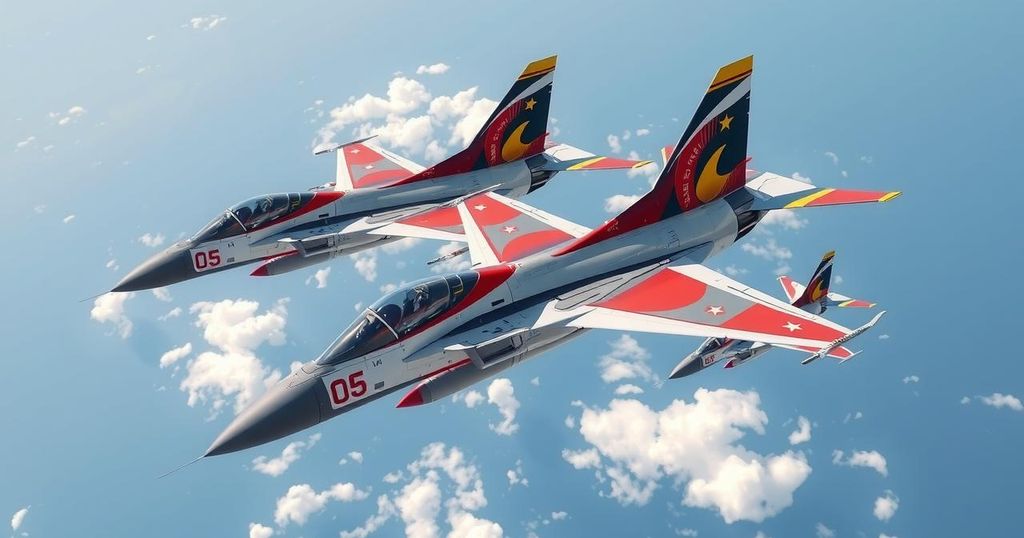China has proposed to sell J-10C fighter jets to Brazil amidst FAB’s search for an additional fighter type. However, negotiations have stagnated due to unspecified reasons. The J-10 is similar to the Eurofighter Typhoon and currently has Pakistan as its only foreign customer. Brazil’s defense strategy includes contracts with Sweden for Saab Gripen fighters and ongoing discussions with the United States for F-16 aircraft.
China has proposed the sale of its Chengdu J-10C fighter jets to Brazil as part of the Brazilian Air Force’s (FAB) quest for an additional fighter jet model. Although discussions have been initiated, they reportedly remain stagnant without a specified reason. The J-10, operational since 2004, is classified as a medium-sized fighter, drawing similarities to the Eurofighter Typhoon. In the international market, Pakistan is the J-10’s sole foreign customer, having ordered 25 units, of which 20 have been delivered.
Despite China’s efforts to penetrate the South American defense market, success has been elusive. Argentina had shown interest in the Sino-Pakistani JF-17 Thunder but has reevaluated its options, particularly as the United States moved to facilitate the sale of second-hand F-16 fighters from Denmark. Currently, the Brazilian Air Force has commitments for 36 Saab Gripen E/F fighters, with a 15-unit assembly planned in collaboration with Embraer. Financial constraints, however, have hindered the timely delivery of these aircraft, resulting in only eight jets added to the fleet so far, with only one received in 2024.
The FAB has also confirmed ongoing discussions with the United States regarding the acquisition of F-16 aircraft, alongside exploring the Indian Tejas fighter as a potential option. Additionally, France has reportedly submitted a comprehensive proposal to Brazil, inclusive of Rafale fighters. In a related development, representatives from Brazil and Sweden indicated a preliminary agreement to procure further Gripen fighters, coinciding with the deployment of Embraer’s C-390 airlifter to replace the Swedish air force’s aging C-130 Hercules fleet.
The Brazilian Air Force is actively seeking to diversify its fleet with a second type of fighter jet, prompting interests from various countries, including China. The J-10 fighter jet presents an opportunity for Brazil to enhance its aerial capabilities but comes amid ongoing financial and logistical challenges associated with existing contracts. The fighter aircraft market in South America has seen competition from various suppliers, particularly following Argentina’s shift in focus toward other options and the United States’ strategic moves to supply F-16s. As Brazil deliberates its next steps, partnerships with manufacturers like Embraer and foreign governments remain crucial to expanding its air defense capabilities.
China’s proposal to supply J-10C fighter jets to Brazil serves as a reminder of the competitive nature of the international defense market. While Brazil aims to augment its hardened defense capabilities through partnerships and acquisitions, financial limitations and existing commitments could influence decision-making. The evolving dynamics highlight the necessity for Brazil to carefully evaluate its defense priorities in the context of available resources and geopolitical partnerships.
Original Source: www.airdatanews.com






